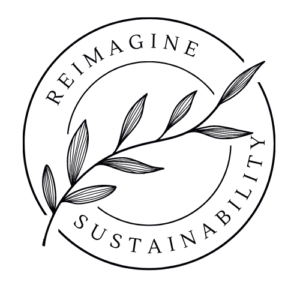The way you look at the world determines how you impact it. In conversations about sustainability, the aspect of an optimistic mindset is often overlooked. Without a mindset that enables us to see the opportunities and interconnections of our world, we will hardly make any progress. Even so, an important aspect of a sustainability mindset is the ability to understand systems in their complexity. Unfortunately, our world’s systems are very complex and unclear. Additionally, our Earth’s systems are suffering due to the destruction and exploitation of natural environments by humans.
If you are interested in the Earth’s systems and how planetary boundaries define a safe space for humans to operate, I’ve got you covered with this article:
Why We Need To Understand The Planetary Boundaries
To overcome the complexity and feeling of helplessness when understanding the concept of systems, I wrote this article for you:
5 Helpful Steps To Understand The Concept Of Systems Better
If you haven’t read it yet, I recommend that you read it before you continue with this article. Complex subjects require a solid knowledge foundation to reveal their true potential.
.

So, I equipped you with knowledge about the concept of systems. Let’s move on in our introduction to systems thinking and reveal its potential.
At the outset, systems thinking is portrayed as something very complex and difficult to grasp, but I disagree and want to show you how it’s done!
What does systems thinking mean?
The systems thinking mindset allows us to see a whole interconnected web of relationships within a system. It distinguishes itself from a linear approach where we look at one part of a system and its different steps.
Linear thinking is easier for our brains to digest. It brings us from A to B and maybe C and D, and in a few cases further. The problem with this approach is that we are excluding important parts of a system. Linear thinking might lead to the desired result, but over time the linear system can become worn out.
For example, in agriculture if monocultures are practised in a nutrient dense area, the yields will look good for the first few years. After a while the soil becomes depleted of specific nutrients which the crop depends on (different plants have different nutrient needs). Consequently, fertilisers need to be used to successfully grow next season’s crop. It’s a very unnatural system and only works by causing more harm to the environment.
Linear thinking doesn’t work well in a circular world
Linear systems seem to work, but usually at the expense of others and then they cause more damage than good. This is because linear thinking excludes crucial parts of the system which have the ability to make the process more sustainable and beneficial.
When you look at the graphic below, linear thinking is boring, it doesn’t reflect the opportunities we have. Compared to systems thinking, it only leads in one direction and leaves little room for intervention. We cannot understand all the elements within a system if we apply linear thinking.

Linear and systems thinking are not the same
On the other hand, systems thinking is a crazy tango or a wild roller coaster ride. A systems thinking mindset embraces the diversity of a system and its different parts.
We are here to learn about systems THINKING. The graphic will support you to understand that a system looks at events in a larger context. Systems thinking is a way to see and understand systems as a whole rather than an isolated collection of parts. Those interconnected patterns depend on each other and create sustainable patterns where each part fulfils its potential.
When you view the world through a systems lens you are able to see the interdependencies all life depends on. Then you are one step closer to understanding the vast opportunities in transforming our systems to be sustainable, the way they should be.
Systems thinking is one of the many principles to achieve sustainable development
Systems thinking helps to move the focus away from single events and behavioural patterns, which are only symptoms of a problem. For example, reducing carbon by cycling rather than taking the car is a great effort (it’s also beneficial for your health). The major underlying problem is that the infrastructure of most cities is in favour of taking the car rather than a bike. If we don’t have the infrastructure/system which favours taking the bike, the majority of people will continue using the car.
You see, I don’t want to discourage anyone from cycling (it’s also my preferred mode of transport), but it doesn’t help if the infrastructure is not safe or convenient for bikes. There are many countries like Denmark and the Netherlands which continuously improve their bike lane infrastructure to the cost of cars. We need to change the systems to make Sustainability mainstream.

Sustainable means of transport
Systems change is not about overthrowing the monarchy or governments (in some cases it might help), but it’s about creating sustainable systems. Systems are well planned and managed when every part of it (like you and me, animals, nature, businesses etc.) can exist at their full potential and achieve their best, desired outcomes.
Instead of curing symptoms let’s solve the challenges at their root
Sustainable development can only be achieved when we fully understand systems. Identifying the parts of a system that require intervention and how they will influence and interact with other parts is important. In this way, our solutions will have a better chance to positively impact the whole system and not just cure the symptoms.
Yes, we live in a complex world and it’s not that easy. No, it’s not too late to fix it because humans have caused the symptoms. Thus we are able to reverse them.

Inspired by Jan Konietzko’s Carbon Tunnel Vision
In the Carbon Tunnel Vision framework designed by Jan Konietzko, you see all the negative symptoms (like biodiversity loss, poverty, climate crisis etc.) which became omnipresent because of badly implemented systems and destruction of healthy, natural systems.
If you want to read more about the Carbon Tunnel Vision, here is a link:
From A Carbon Tunnel Vision To A Holistic Collaboration Approach
You are part of multiple systems which need some attention
The interconnectedness of humanity’s challenges or crises are a result of poor system development and poor leadership. From linear thinking, from greed for profit.
I hope that you see the interconnection between talking about sustainability and applying the systems thinking approach. The issues are so complex that we need to develop Sustainability mindsets to solve the problems at their root and not just treat the symptoms.
Our solutions need to address the long-term behaviour of a system. Sustainable systems are capable of maintaining themselves in the best possible way, but it’s a long-term process that never ends.
Our task is to understand the underlying system and structural relationships that cause unwanted problems, negatively impact our lives or make it difficult for us to make sustainable decisions. We need to apply systems thinking in as many areas of our lives as possible.
A poorly-thought-through solution can easily lead to newer and bigger problems if the whole system is not taken into account.
To make our lives easier, there are 11 systems thinking principles to guide us in developing our systems thinking capability.
11 systems thinking principles which will make your life easier
See systems as a cause. Outcomes are based on the functionality of the parts of a system. So what you see as a cause is dependent on a multitude of factors. It might be more familiar to speak of cause and effect. The world’s crises events are not isolated occurrences, but the result of systems failure.
Everything is interconnected. There are rarely any isolated elements on our Earth (unless it’s frozen bacteria in permafrost). For systems to function, it’s good to know that if we change one part of a system it can have far reaching consequences.
The world is circular. Circularity is the basis of life, so I wonder why people thought that removing natural systems wouldn’t have consequences. Spoiler: They were incapable of grasping it, and the ones who understood, were ignored.
Feedback drives complexity. The decisions you make today can still impact your life in 10 or more years. This means that what happened in the past influences the present and future. We are experiencing the consequences of massive environmental and social destruction from the past.
Uncertainty of cause-effect relationships. We can’t know everything and that’s okay. But we should make an effort and at least try to understand that the decisions we make will always lead to an effect. Unless we make decisions which have the best possible outcomes, we will continue fuelling our crises. Unintended consequences. Even decisions which are made with the best intent can cause negative outcomes. We are not perfect and neither is nature. Sustainability is an infinite process of progress, systems will always evolve because change is inevitable. Trial and error is a good way to develop resilient systems. It can be difficult but the reward will be greater than the effort.
We are halfway through and I’m looking forward to introducing you to the remaining systems thinking principles
Leverage points. Intervening in a system can be more successful if we find the right place to intervene. It doesn’t make sense to solve a problem by supporting damaging system parts. Efficiency can be key in accelerating solutions which work best.
Your mental model matters. This principle is often overlooked and I like to repeat: humans made the problems, so humans can solve them. Without a supportive mental attitude we won’t be able to reach our Sustainability goals. Factors such as education and values are increasingly recognised as beneficial in sustainable development. The way you see the world matters. Do you see it as full of opportunities or doomed to failure?
Don’t underestimate the power of soft skills. What makes us humans is not money or prestige. We underestimate the power of softness because … yeah why is that? Love and kindness are still overlooked in sustainable development. Love can move mountains and that’s what we need for successful system change.
Visualise the system. There are different tools and possibilities which make it easier to identify parts of a system and map them. I’ve prepared an article on how to use your newly gained concept of systems and systems thinking knowledge. I linked it at the end of this article because we are almost at the end here.
Make use of diversity. Without diversity we cannot exist. We need the vast array of mechanisms which make life on earth possible. To be healthy we need a diversity of people around us, we need diversity at the workplace to flourish, we need a diverse diet and so on. Diversity is queen!
What now? You’ve gained all this amazing knowledge. Do you crave more? I hope so because I’ve prepared this article for you. to implement your knowledge:
How To Easily Apply Systems Thinking In Your Life
Have fun!



Solving the root issues, yess! Nothing sustainable has a quick and easy route. Subscribed to the newsletter! Thanks!
Welcome to the Reimagine Sustainability Community! 🙂